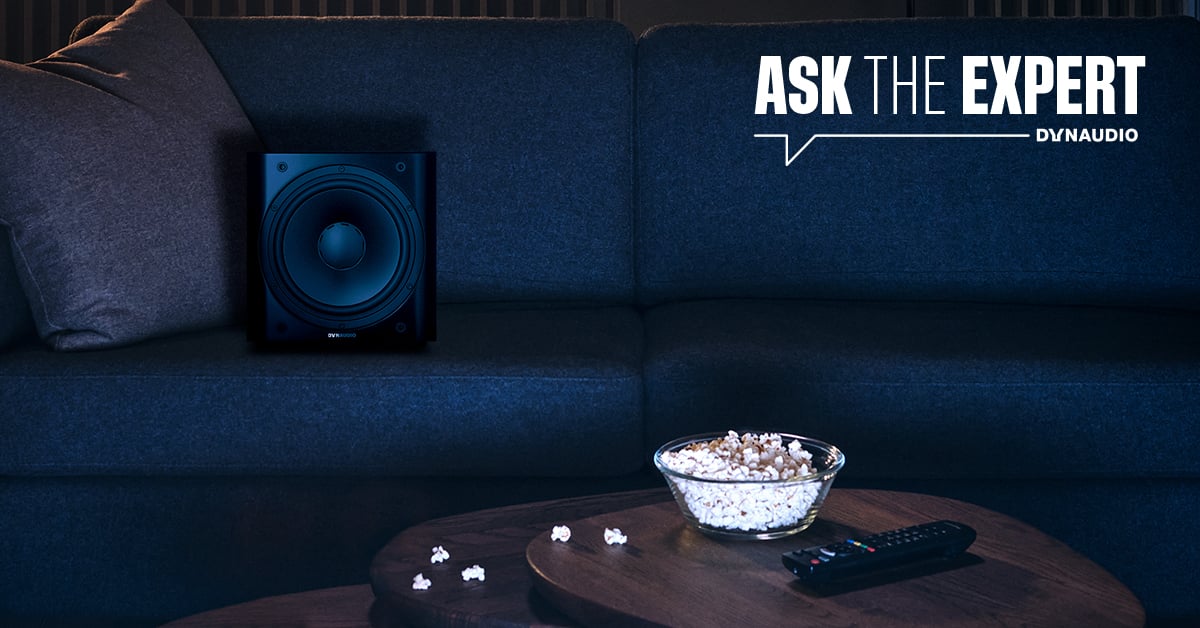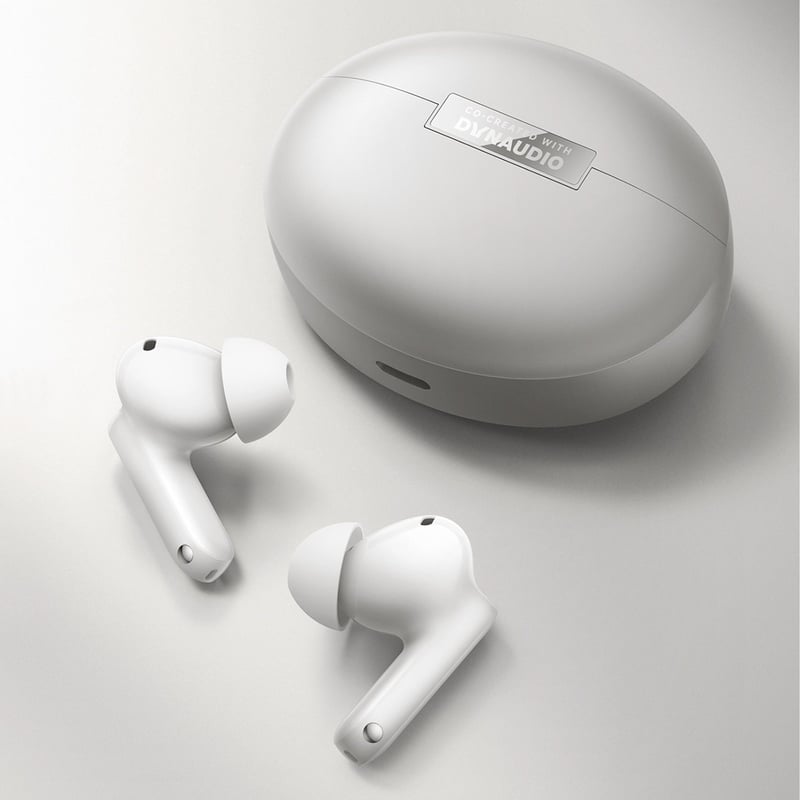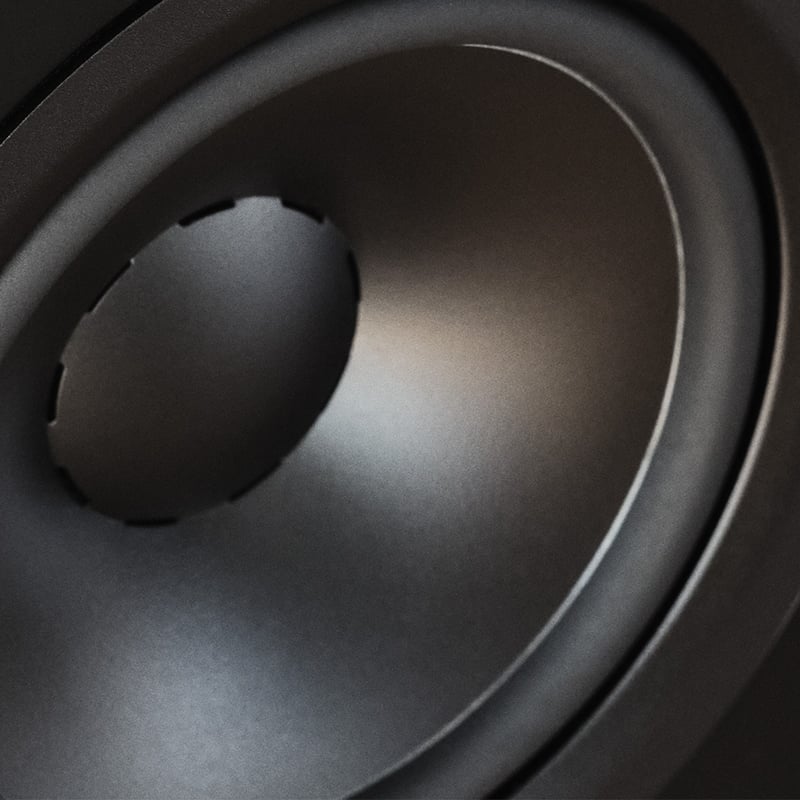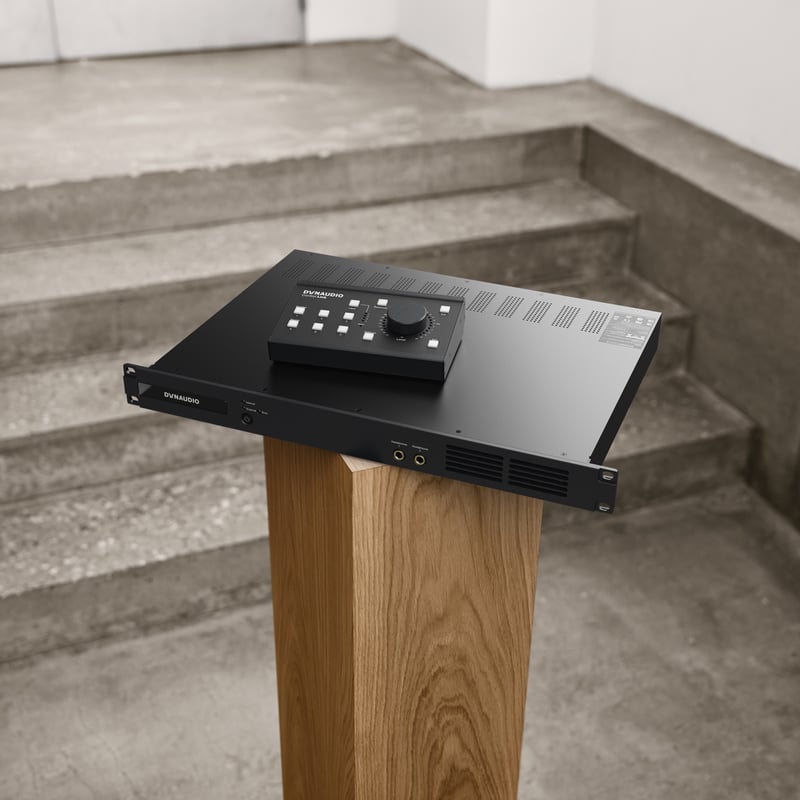In this episode of Ask The Expert, Otto explains why you need a subwoofer, as well as exactly how to set it up – including a rather unusual industry insider tip for getting the placement just right.
Keep sending in your questions using the 'Send us your questions' form at the bottom of this page and we'll keep answering them! Enjoy.
Do I need a subwoofer to go with my Dynaudio stereo speakers?
Generally speaking, you don't need a subwoofer. It really depends on your setup and what you want to do. For example, if you want to have compact speakers in a large-ish living room or you want to play loud but don't want big speakers, then you don't really have any other choice but to add a subwoofer.
Another example would be a home theater setup, where we definitely recommend using a subwoofer to play back the LFE (low-frequency effects) channel, which has a lot more dynamic range in the lower frequencies than the main channels do.
What does a subwoofer add in a stereo setup?
There are generally speaking two approaches to adding a subwoofer to a stereo system.
One of those approaches is to add the subwoofer below the frequencies that the stereo speakers themselves can play, where the subwoofer will provide those very low frequencies beyond what the stereo speakers are capable of. In this case, you align the stereo speakers and the subwoofer, so that the subwoofer only plays what the speaker doesn't play itself.
The other approach is to have the subwoofer take over part of the frequency response from the main speakers, so that you're creating a crossover between them at a somewhat higher frequency. That gives you the benefit of being able to play louder with less distortion, because you don't have as much stress on the main speakers.
The best option depends entirely on your system and the setup capabilities that you have.
What happens when you add a sub to your system?
When you add a subwoofer, a few different things happen. First of all, if the music you're listening to actually has content in the very low frequencies, then you'll be playing that back. With this kind of music, to get the right sense of that space and of that room, you really need the whole frequency range i.e the very low frequencies, which only a subwoofer can provide.
The same thing is true of high frequencies: when you're playing back a bass instrument or a kick drum or something like that, there are also higher frequencies present, which sit above the core frequencies of the instrument. That information needs to be played back to give the right sense of the instrument.
A subwoofer will provide the oposite benefit, i.e produce the low frequencies present in higher-pitched instruments. You don't get the right sense of the recording room and the listening space if you don't include those low frequencies, despite the fact that you may be listening to music which seemingly resides higher up the frequency range.
So even if you have a recording of a violin or some instrument that doesn't itself actually put out low frequencies, the spectral reproduction of that recording becomes more believable when you have the full frequency range present in the playback.
Do I need additional equipment in order to connect a subwoofer to my stereo speakers?
The best way to connect a subwoofer to the system is to use pre-outs on the amplifiers, and connect that to the subwoofer in parallel with the stereo speakers.
If we assume that you don't have a crossover in your stereo amplifier, you should set up the subwoofer so that it adds output below the capability of the stereo loudspeakers, and blends nicely together with them.
With the Sub 6, we made this very simple to do: we made presets that match each of the stereo loudspeakers that we have. The presets are not just a cutoff of frequency, they're also balanced to make a seamless transition from speaker to subwoofer by ensuring a smooth roll off between the speakers' lowest frequencies and the subwoofer's highest frequencies.
We have made these presets using our Jupiter measurement system so that they work anechoically: once you put it into your room, you will get a perfectly balanced system where all you have to do is figure out where to place it in your living room. We'll discuss that a little later.
How do I configure a subwoofer with my stereo speakers? And where should I place the subwoofer?
If you're not using measurement equipment, and you want to do configure your subwoofer by ear, the first step is to try to balance the volume level.
To do this, play some music with good, varied bass output, and try to adjust the volume of the subwoofer so that it has a similar volume output as the main speakers, and then adjust the crossover point downwards. Make sure that you don't have a gap between the subwoofer and the main speaker, so that it fills it out. On the other hand, it's also important that there's not too much of an overlap, because then you will get a peak in that overlap area.
Using your ears can be tricky, and it's a fine balance, since you don't want to have a gap, but you also don't want to notice that the subwoofer is playing – it should just be an extension of the main speaker system.
In order to find the right placement of your subwoofer, there's an old trick that that might feel silly, but it really works. Put the subwoofer in your listening position: put it literally on the sofa. And then crawl around on the floor – because this is this is where the subwoofer will actually be – to find the spot where you have the most bass output. And that's the spot where – if you reverse the two – you will also get the best output when you're back in the listening position.
It might feel weird crawling around on your floor, but trust us, it really does work for finding the optimum spot for the subwoofer.
Send us your questions
Don't forget to submit your questions to our experts via the form below – they might just get featured in a future episode of Ask The Expert!








1 comments